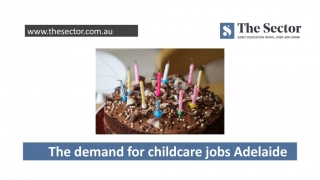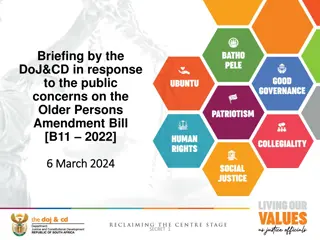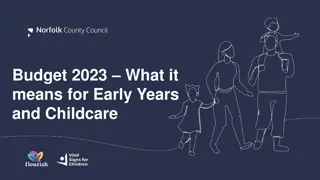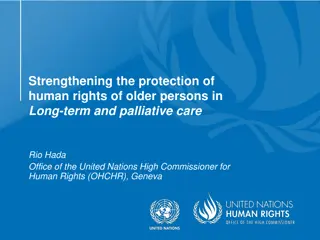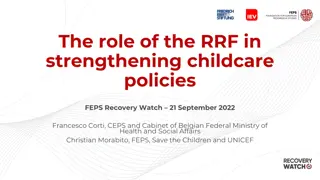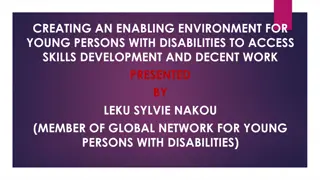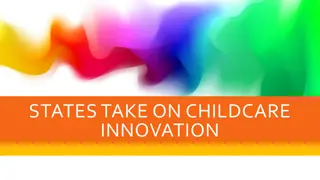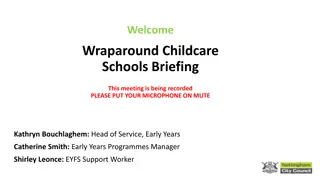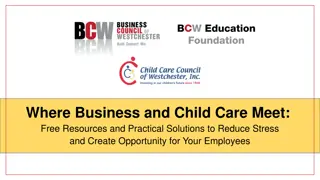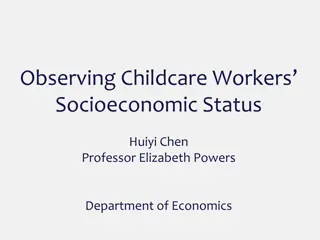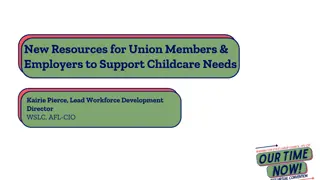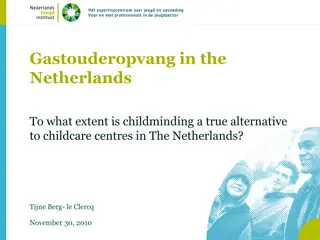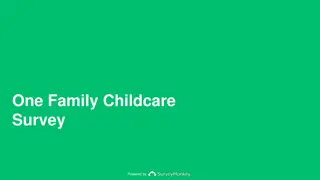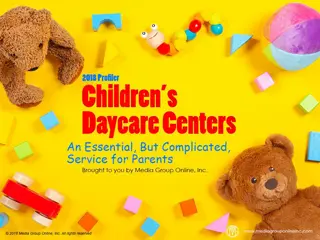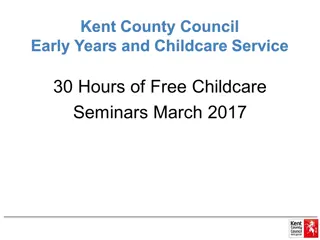Protection of Young Persons at Work and Childcare Regulations
This comprehensive legal framework outlines the protection of young persons at work, childcare, and parental leave rights. Key aspects include prohibition of child labor, safeguards for juvenile employees, health and safety measures for pregnant and breastfeeding employees, maternity leave provisions, and promoting work-life balance through parental leave policies. International standards such as the UN Convention on Rights of the Child and ILO conventions inform these regulations.
- Young Persons Protection
- Child Labor Regulations
- Parental Leave Rights
- Workplace Safety
- Legal Framework
Download Presentation

Please find below an Image/Link to download the presentation.
The content on the website is provided AS IS for your information and personal use only. It may not be sold, licensed, or shared on other websites without obtaining consent from the author. Download presentation by click this link. If you encounter any issues during the download, it is possible that the publisher has removed the file from their server.
E N D
Presentation Transcript
Protection of Young Persons at Work, Protection of Childcare JUDr. Jana Komendov , Ph.D.
Programme 1. Prohibition of child work, 2. Protection of juvenile employees, 3. Health and safety at work of pregnant employees, employees who are breast-feeding and employees after childbirth, 4. Maternity leave, prohibition of notice, 5. Parental leave, reconciliation of family life and professional life
Protection of Young Persons Legal Framework International standards: UN Convention on Rights of Child (1989) ILO conventions (prohibition of child labour, minimum age for entrance in employment) EU law - Council Directive 94/33/EC on Protection Young People at Work Definitions: Child any person who is less than 15 or more then 15 but subjected to compulsory school attendance. Adolescent young person of at least 15 years of age, less than 18 who is no longer subjected to compulsory school attendance
Prohibition of Child Work Member States shall take necessary measures to prohibit work by children. Possibility to lay down exceptions for: children pursuing cultural or similar activities children of at least 14 years of age working under a combined work/training scheme or an in-plant work-experience scheme, provided that such work is done in accordance with the conditions laid down by the competent authority; children of at least 14 years of age performing light work Cultural or similar activities (sports, artistic, advertising) is subjected to prior authorisation by competent authority In individual cases. It may not be harmful for school attendance or vocational guidance
Working Condition of Juvenile Employees Prohibition of some types of work (vulnerability of young people shall be taken into account) Prohibition of work beyond the physical or psychological capacity of young people work involving harmful exposure to agents which are toxic, carcinogenic, cause heritable genetic damage, or harm to the unborn child or which in any other way chronically affect human health; work involving harmful exposure to radiation; work involving the risk of accidents which it may be assumed cannot be recognized or avoided by young persons owing to their insufficient attention to safety or lack of experience or training; or work in which there is a risk to health from extreme cold or heat, or from noise or vibration.
Working Hours of Juvenile Employees Limitation of working hours of adolescents - maximum 8 hours per day, 40 hours per week. Rest periods: Daily rest during 24 hours, adolescent is entitled to 12 continous hours of rest period Weekly rest during each 7days period at least 2 days for both children and adolescents. Breaks at work after 4,5 hours of work at least 30 minutes
Prohibition of Night Work Children prohibition of work between 8 p.m. and 6 a.am. Adolescents prohibition of work between 10 p. m. and 6 a. m. or 11 p. m. and 7 a . m. In any case between midnight and 5 a. m.
Protection of Women - Mothers Protection of pregnant women and women who are breastfeeding, women who have recently given birth Legal framework - Council Directive 92/85/EEC concerning the implementation of measures to encourage improvements in the safety and health of pregnant workers, workers who have recently given birth and women who are breastfeeding (Tenth individual Directive within the meaning of Article 16(1) of Directive 89/391/EEC).
Definitions Pregnant worker worker who is pregnant and informs her employer of her condition Worker who has recently given birth - worker who has recently given and informs her employer of her condition Worker who is breastfeeding - worker who is breastfeeding and informs her employer of this fact.
Forms of Protection Prohibition of some types of work transfer to alternative work, Non-obligation to perform night work transfer to daytime work, Time-off for ante-natal examination, Maternity leave paid obstacle to work, Protection against dismissal
Maternity Leave Workers are entitled to a continuous period of maternity leave of a least 14 weeks allocated before and/or after confinement. Two-week maternity leave is obligatory. Maintenance of payment: in the form of wage reimbursement or adequate allowance
Prohibition of Dismissal It is recognized as a part of the workers health. Prohibition of dismissal of workers during the period from the beginning of their pregnancy to the end of the maternity leave save in exceptional cases not connected with their condition which are permitted under national legislation and/or practice and, where applicable, provided that the competent authority has given its consent; If a worker, is dismissed during this period the employer must cite duly substantiated grounds for her dismissal in writing Member States shall take the necessary measures to protect workers, within from consequences of dismissal which is unlawful.
Protection of Both Parents Legal implementing the revised Framework Agreement on parental leave BUSINESSEUROPE, ETUC and repealing Directive 96/34/EC Purpose - set out minimum requirements on parental leave and time off from work on grounds of force majeure as an important means of reconciling work and family life and promoting equal opportunities and treatment between men and women. framework - Directive 2010/18/EU concluded by and UEAPME, CEEP
Parental Leave Purpise of parental leave to take care for a child Right of men and women workers to an individual right to parental leave on the grounds of the birth or adoption of a child to take care of that child until a given age up to eight years to be defined by Member States and/or social partners. The minimal length 4 months
Prohibition of Less Favourable Treatment on the grounds of Parental Leave The right of a worker to return to the same or similaw job at the end of parental leave, Maintenance of all rights of employees, Protection workers against less favourable treatment or dismissal on the grounds of an application for, or the taking of, parental leave
Time off Work on the grounds of Force Majeure Time off from work for urgent family reasons in cases of sickness or accident making the immediate presence of the worker indispensable Conditions shall be laid down by national law, collective agreements and/or practice
New legislation Directive (EU) 2019/1158 of the European Parliament and of the European Council of 20 June 2019 on work-life balance for parents and carers and repealing Council Directive 2010/18 Deadline for implementation - August 2022



